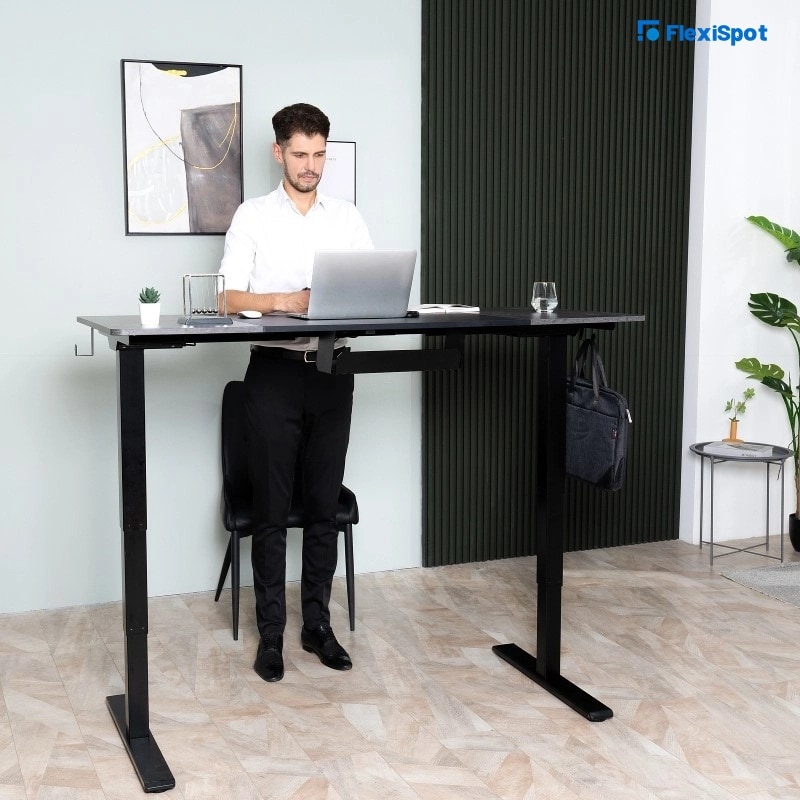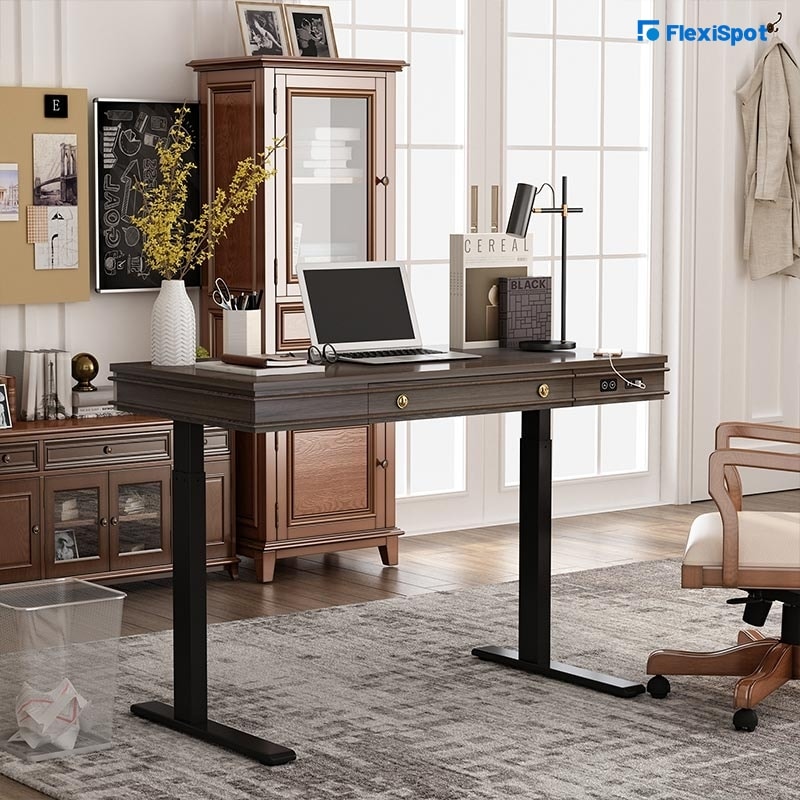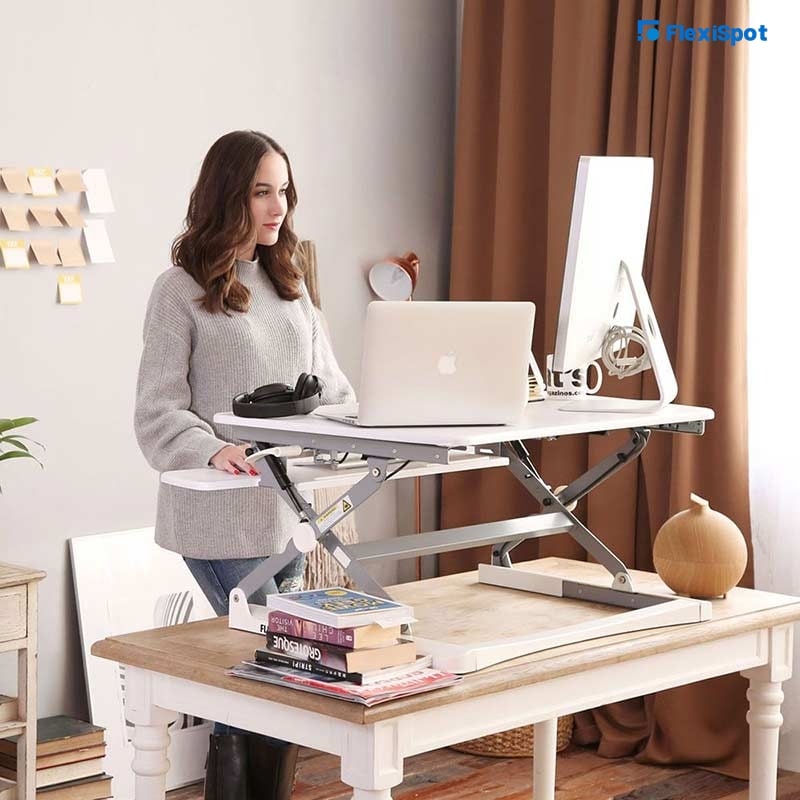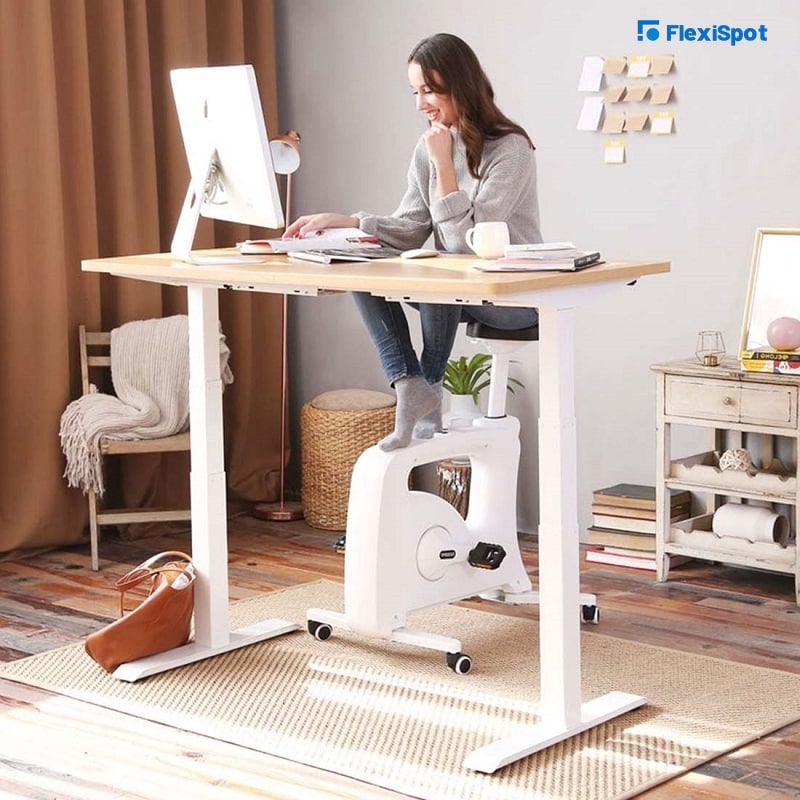Myths provide easy answers to tough questions. At some point, you probably believed in Santa, the Easter Bunny, or that the Sandman ushers you into dreamland. So what changed?
Well, for one, you outgrew that phase of your life. But as we grow older, scientific inquiry replaces belief, and the mechanics behind understanding become more inclined towards critical thinking.
Previously, people thought that sitting all day was the best way to get things done in an office. But, our understanding of the human body has shifted. Now, we understand that there are consequences to this particular workplace nuance.
In response, ergonomists developed standing desks, which doctors recommend as the best way to combat ailments brought about by excessive sitting. However, as with all new inventions, myths about standing desks were subsequently birthed.
But, first, let's set the scene with an origin story.
Where Did Standing Desks Come From?
Standing desks are not a new phenomenon. Their use can be traced back as far as the renaissance era. Various intellectuals, artisans, and even politicians used these contraptions to enhance their productivity, focus and improve their posture. Thomas Jefferson, Michelangelo, Da Vinci, and Charles Darwin are a few of the notable names that pop up.
The origin story of the standing desk is reasonably sound: an analysis on the subject leads to a straightforward theory. Sitting and a lack of physical activity increases mortality rates.
So, the standing desk (in whatever form it was adapted) allowed such innovators to increase their physical activity without abandoning their intellectual or creative pursuits.
Over time, our understanding of the human body has improved. Now, we see a direct relationship between sitting for long periods and a likelihood of developing; poor blood circulation, bad posture, obesity, heart conditions, and other lifestyle-related ailments.
Today, we're going to use a measure of scientific reasoning as we debunk the most common myths on standing desks.
Getting A Standing Desk = Standing All Day
Many people believe that working at a standing desk requires you to stand the entire time. But, this is untrue when you consider two things. The first is how modern office chairs work. These seats are adjustable to sit high enough for you to reach your desktop. We also have various stools that are elegant alternatives, so you don't have to depend on low chairs all the time.
Modern standing desks also come with powerful motors and advanced control consoles. These features allow you to set the height to your liking. You can also program reminders that alert you that you've been on your seat for too long and it's time to get up.
So, you don’t have to discard your ergonomic office chair or invest in expensive orthopedic footwear or socks. That's because you don't need to stand all day.
Working on Standing Desk Exposes You to Back Pain, Varicose Veins and Other Health Issues
You don't have to worry about causing or aggravating health issues while using a standing desk. You could solve some of these issues if you use your sit-stand desk correctly and with a healthy mix of standing, sitting, and deliberate physical movements.
Understanding and using the control features of your desk properly can solve lousy posture. All you need to do is lock in on the perfect height. This way, you don't have to lean or slouch to see your monitor or operate your keyboard.
Are you still worried about muscle fatigue in your legs? Well, an anti-fatigue mat offers an elegant solution. It softens the ground, so the soles of your feet don't feel the burn. However, the key to getting all the benefits is moderation. Pace yourself, understand the controls, start standing for short, infrequent periods, and adjust the intensity as you get used to the general concept.
Working on Your Feet Saps All Your Energy
There is some truth to this myth. Working while standing won't maximize your energy. But, neither does remaining seated all day at your desk. However, working on your feet optimizes the energy you bring to the table. It offers a viable means to reduce distraction and engage more focus, which is great for productivity.
With that, you can get your tasks done ahead of schedule, leaving you with plenty of time to rest and recoup your spent energy. Working like this also casts a spotlight on the need for proper hydration, exercise, and dietary choices.
Getting a standing desk will change your life for the better. Suddenly, you'll develop an urge to eat healthier meals and work out to improve your form.
Standing Desks Don't Encourage Movement as You're Tethered to Your Monitor and PaperWork.
Your work rate and engagement in your tasks is what tethers you to your workstation, not your office furniture consideration. However, working from a height-adjustable desk accords you more flexibility in movement and positioning than most people think.
You won’t be able to stop moving. Look at it even at a micro-movement level. You’ll shift your weight from one foot to another. Bending and straightening your legs lets you curl & flex muscles from your toe to neck. Dropping your arms and lifting them also allows you to work out any kinks that develop in your shoulders.
I’ll Look Weird If I Work While Standing
Looking weird is part of the pain that comes with being an early adopter. So, not allowing idle gossip to eat at you helps a lot. For all you know, the people you interact with stare at you with admiration and curiosity. If you engaged them on the issue, you'd be surprised at how they'd want to be like you!
More people will make excuses to visit your office, especially if you have a modern electric standing desk with all the bells and whistles. Let's face it, we all like an air of sophistication. And, no other piece of office furniture combines elegance and futuristic mechanics that a quality sit-stand desk carries.
Standing Desks Cost Too Much
Height adjustable desks come at a higher cost compared to ordinary office desks. That's a fact. But do these cheaper options deliver the same value for money? No way! For one, standing desks feature better material construction and embedded technologies. Most people are willing to pay more to get more functionality and extended service life.
Height-adjustable desks also consider the ergonomic needs of office workers. They help alleviate muscle aches, eye strain, and other factors that can aggravate pre-existing health problems.
This translates to improved health and higher productivity, things you can't put a price on! So when you look at it from that angle, the question becomes, "why isn't every company investing in standing desks?" Maybe that will be the case when we all stop willingly believing in these myths.
Standing Desks Are a Hyped Fad That Will Eventually Fade
Nothing good comes without its fair share of criticism. The standing desk is no exception. Critics will focus on all the things it doesn’t do instead of appreciating what it does. Ergonomists do claim that this piece of furniture might aid in weight loss- critics have been known to tear apart this claim at the expense of all the good the desk does.
Why do we think this is more than a passing fad? Standing desks can help you accelerate your health and wellness initiatives. For instance, standing after a meal accelerates the normalizing of blood sugar levels even after a heavy meal.
Working on your feet also reduces shoulder, back, and muscle aches in other parts of your body. Standing desks can also lower the risk of developing:
Diabetes
Obesity
Heart-related illnesses
Circulatory issues
Elevated cholesterol levels
Breast and colon cancer
And many other things that could lead to a premature death
For employers and employees that continue to witness the stated benefits, that’s enough evidence that the standing culture is here to stay.
Are You Thinking of Getting a Standing Desk?
A standing desk comes with its fair share of adaptations. For instance, you’ll have to learn how to assemble your desk, use the control panel and program it to your desired settings. Afterward, your body might experience some effects transiting from sitting to standing.
One noticeable side effect is you may experience some discomfort or pain while getting used to working while standing. All this can reduce your productivity and creative drive. But only for a short time. Eventually, you'll adopt some cultural shifts that will help you reap the full benefits of working from an ergonomically sound workstation.
So, don't let what others say about standing desks discourage you. Venture out there, experiment, and draw an informed opinion.
Conclusion
So, are standing desks worthy of your consideration? We can surmise two things. One, standing desks deliver a higher value for money spent compared to typical office desks.
Again, these innovations won't provide miraculous solutions to weight issues, muscle aches, and other underlying health issues. But, you'll benefit from an elevated level of health consciousness. Of course, it all depends on how you use your standing desk.
We hope this short and honest piece helps you shake off any doubts occasioned by these common myths and misconceptions. Join us again on our next piece as we deliver our two cents on workplace productivity.








